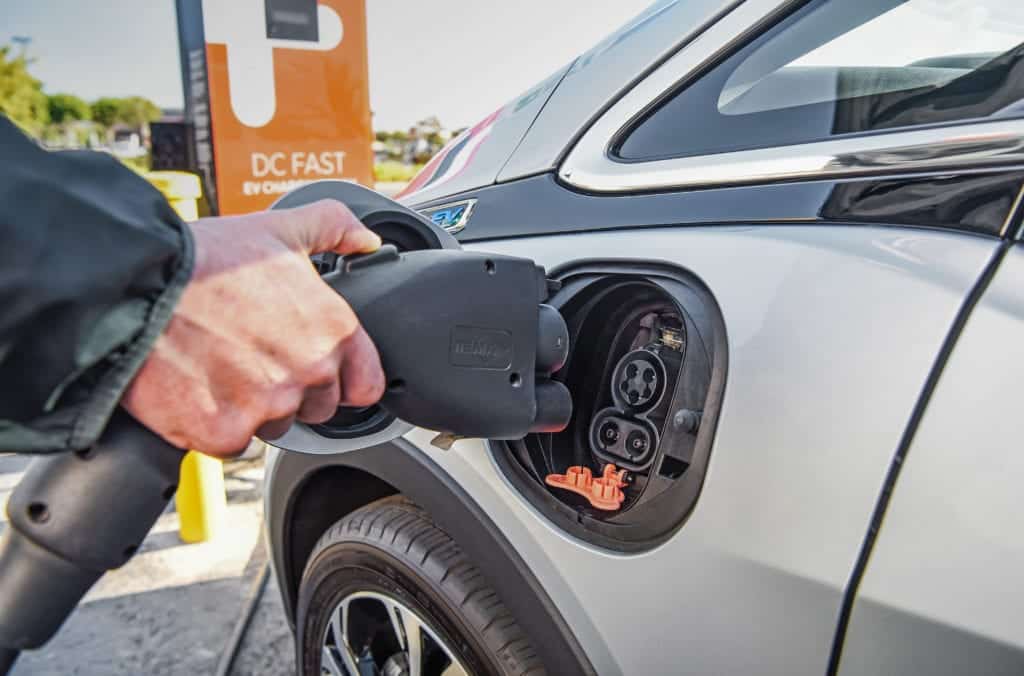Charging ahead

Anyone who has traveled the world with an electric plug adapter for different sockets in different countries will be familiar with varying plug protocols in electric cars.
But one thing most EVs do share is that they can be charged in three different ways. Here’s a brief description for the Bolt:
Level 1: 110 volts. Simple as plugging in your laptop or toaster. Using the cord that stows in the Bolt, put its SAE J1772 car plug into the car’s socket and the other end into any home receptacle. Good news? The cord is free. Bad news? You get 4 miles of range for every hour of charging. That’s almost 60 hours — more than two days — for a full 238-mile charge.
Level 2: 240 volts. This also uses the SAE J1772 plug for chargers you can find in public places or install at home. Available from the likes of Amazon or Home Depot, the tab is $400-$1,000. and home installation runs $600-$700. Part of the cost might be subsidized by your local utility or government. Buy Chevy’s charger and you can fold its cost into the Bolt’s price.
You’d get 25 miles of range for every hour of charging. That’s a full charge overnight and the Bolt can be programmed to charge when electricity rates are lowest.
Level 3: 480 volts. Called DC Fast Charging, this uses the SAE CCS Combo plug, as does BMW’s i3. The price: $750. Not something you’d install at home, 480-volt stations are found on the road via sites like PlugShare.com. Commercial locations charge by kilowatt-hour; $9.95 for 30 minutes is typical. That half hour adds 90 miles of range. A second half hour yields somewhat less as charging slows as you get closer to full. Still, with a 238-mile range and an ever-growing network of stations, you can plan longer drives.


